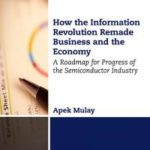This was originally published on EBN.
At its inception, the Global 450 Consortium (G450C), a New York-based public/private program with a goal of building the 450mm wafer and equipment development environment, was a promising sign. As I wrote at that time:
This collaboration is first step forward by the global semiconductor industry to ensure a steady supply of 450mm diameter silicon wafers at a reduced cost. However, unless this consortium also ensures a similar collaboration and cooperation to generate a steady demand for this newly manufactured silicon, the huge capital investments made by the participants in the G450C consortium towards a transition to 450mm diameter silicon wafers cannot become sustainable.
The initiative had strong leadership from its founding members: GlobalFoundries, IBM, Intel, Samsung, TSMC, and the College of Nanoscale Science and Engineering (CNSE). It is housed on State University of New York’s (SUNY’s) University at Albany campus and maintains a focus on “using wafers, equipment, people and cleanroom space to develop and test equipment to meet industry needs.”
At that time, I believed that global semiconductor industry did not take my advice seriously. 2014 passed and in 2015, I made some additional bold forecasts and predictions about the uncertainty of the global semiconductor industry’s ability to usher the Internet of Things (IoT) revolution. In the forward of that book, Ravi Batra wrote:
To my knowledge, Mr. Mulay is the only writer who has made a connection between Moore’s Law and Macroeconomic Policy. The law has played a significant role in vast computer revolution, but the author argues that without proper economic policies, the future validity of this law is at best uncertain.
Since 2015, we are in fact noticing more mergers and acquisitions (M&A) happening in the U.S. and global economy. I believe that these M&A violate anti-trust laws and hence the global economy and U.S. economy (in particular) have continued to slowdown.
In 2015, we also saw a major crash of China’s stock markets in the summer. Collaboration is critical for ensuring a robust growth in supply and demand for global semiconductor business and it is lacking in the current landscape. I also was confident that that the newly introduced drivers for progress of semiconductor industry with More-than-Moore and Beyond CMOS would not achieve its desired goals of progressing Moore’s law.
In a book published in 2016, I offered a complete ecosystem for global semiconductor business to usher the Fourth Industrial Revolution while incorporating the new drivers for More-than-Moore and Beyond CMOS. I also offered how Moore’s law can be used to exponentially decrease the $20 trillion U.S. national debt. In the foreword to the book, collaboration expert Dr. Steve Willis, wrote:
[Mulay’s] vision involves a collaborative ecosystem operating for the overall economy as well as the semiconductor industry; a shift away from crony capitalism to free market Mass Capitalism; greater use of collaborative business models and collaborative corporate structures; collaborative R&D ventures; collaborative use of infrastructure and resources; collaboration between companies, academia and government; as well as collaboration between consumers and producers.
A recently published article on Extreme Tech entitled ‘450mm silicon wafers aren’t happening any time soon as major consortium collapses’, adds fuel to this conversation. I believe my ultimate will also come true:
Without above proposed macroeconomic reforms, progress of Moore’s law seems impossible and chances of the U.S. economy transitioning from a great recession to a depression seems inevitable.
I know that it is very difficult to change the minds of a few vested interests to change. At the same time, coming economic depression would cause severe crisis in global economy. However, every crisis is also an opportunity. What do you think we’ll learn as an industry from the coming economic shifts? Let us know in the comments section below. I’ll be sharing my thoughts about macroeconomics and the path forward for the global economy in a new volume, titled The New Macroeconomics, due out by end of 2017.


Recent Comments